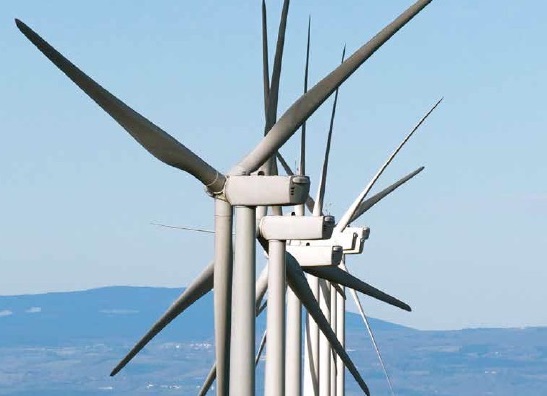In recent years, the world is seeing expansive development of wind power. Sage Oil Vac recently exhibited its products at AWEA’s WINDPOWER 2014 Conference and Exhibition in Las Vegas. While visiting with a broad range of customers, vendors, and attendees, one widely discussed topic was the growing trend of condition-based oil exchanges for wind turbines.
“Based on discussions and insights, it’s apparent that condition based oil changes are quickly becoming recognized as a proactive approach to addressing market demand and efficiency needs, but without the investment in dynamic condition-based wind turbine oil changes there is a significant and extended risk for negative and costly results,” said Dallas Dixon, Sage Oil Vac’s sales and marketing manager for wind.
A condition-based wind oil change (CBW) is an oil change that only occurs after a series of tests and analysis has taken place, therefore constituting a need for an exchange. These tests are usually conducted by a third party provider at an additional cost.
 This potential trend goes against the traditional method of interval-based oil changes. Interval-based oil changes are generally based on factors such as: time span (1-2 years); number of operating hours; number of rotations; change of product (e.g. Mobil to AMSOIL, or vice versa); or scheduled OEM maintenance.
This potential trend goes against the traditional method of interval-based oil changes. Interval-based oil changes are generally based on factors such as: time span (1-2 years); number of operating hours; number of rotations; change of product (e.g. Mobil to AMSOIL, or vice versa); or scheduled OEM maintenance.
With industry expansion, business growth involves analysis and management of operating costs, and oil changes are not an exception. Operating costs involved in interval-based oil changes can include lost production (wind turbine is not operating), paperwork, labor, equipment cost, oil disposal cost, and lubricant cost. Condition-based oil changes are not an exception to this rule. However, businesses may also find they will require the use of additional equipment such as expensive diagnostics and costly laboratory analysis expenses.
One area that interval-based wind oil changes naturally address, that many overlook with CBW oil changes, is the variation in weather and how that affects the intervals or “condition” of the system. Interval-based oil changes are a “proactive” approach to caring for a multi-million dollar piece of equipment.
“Proactive” in the sense that many possible expensive issues can be prevented if routine maintenance is executed. In addition to the oil change itself, owner/operators and manufacturers have the opportunity to inspect other elements of the wind turbines and complete routine maintenance, before a diagnosis notifies of a problem that might be beyond repair. While a condition based oil change has benefits such as reduced usage of expensive oils and analysis based feedback, the process of obtaining the oil sample can be a problem in itself. While extracting the oil analysis, re-suspension of settled contaminants can occur. Also, the oil sample may vary depending on where inside the gearbox the sample is drawn.
According to its research, Sage Oil Vac believes that while technology and CBW is evolving, there is a general need for quantitative planning methods and measurement techniques which will make detection of failures possible. However, these methods need expensive sets of input data. The location of laboratories may not be geographically convenient due to remote locations and it is very costly to have these analysis conducted by a third party. A condition-based oil change can be viewed as a “reactive” course of action, if not dynamic and can significantly decrease ROI when it comes to preventative maintenance, because this type of oil change is typically done only after a problem surfaces — once the analysis is complete. Often when a problem is detected, it can often be too late and maintenance equipment and suppliers can be more expensive to mobilize depending on weather and location variations.
While technology advancements and dynamic condition based maintenance may be our future, interval-based oil changes and proactive prevention guarantees efficiency and safety today. We look forward to technology advancements in predictions, as you can’t prevent what you can’t predict. But when multi-million dollar investments are at stake, “An ounce of prevention is worth a pound of cure,” as Benjamin Franklin wisely stated.
— Source: Sage Oil Vac




























